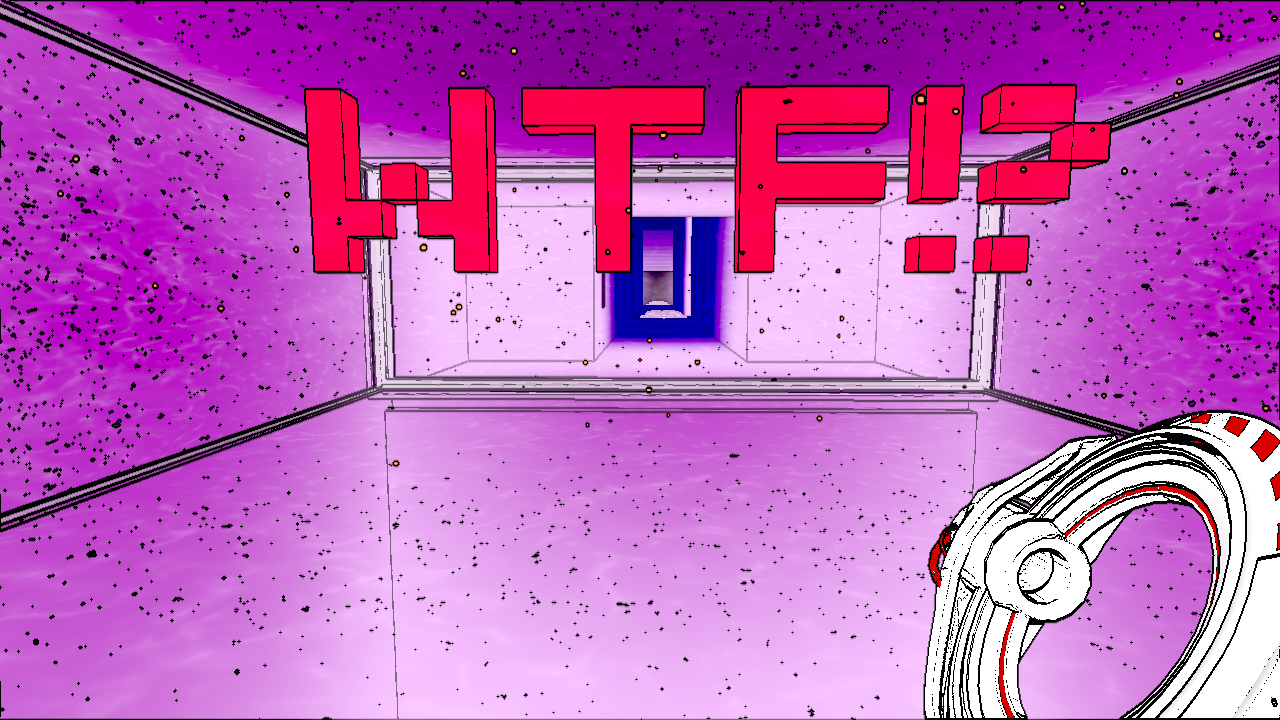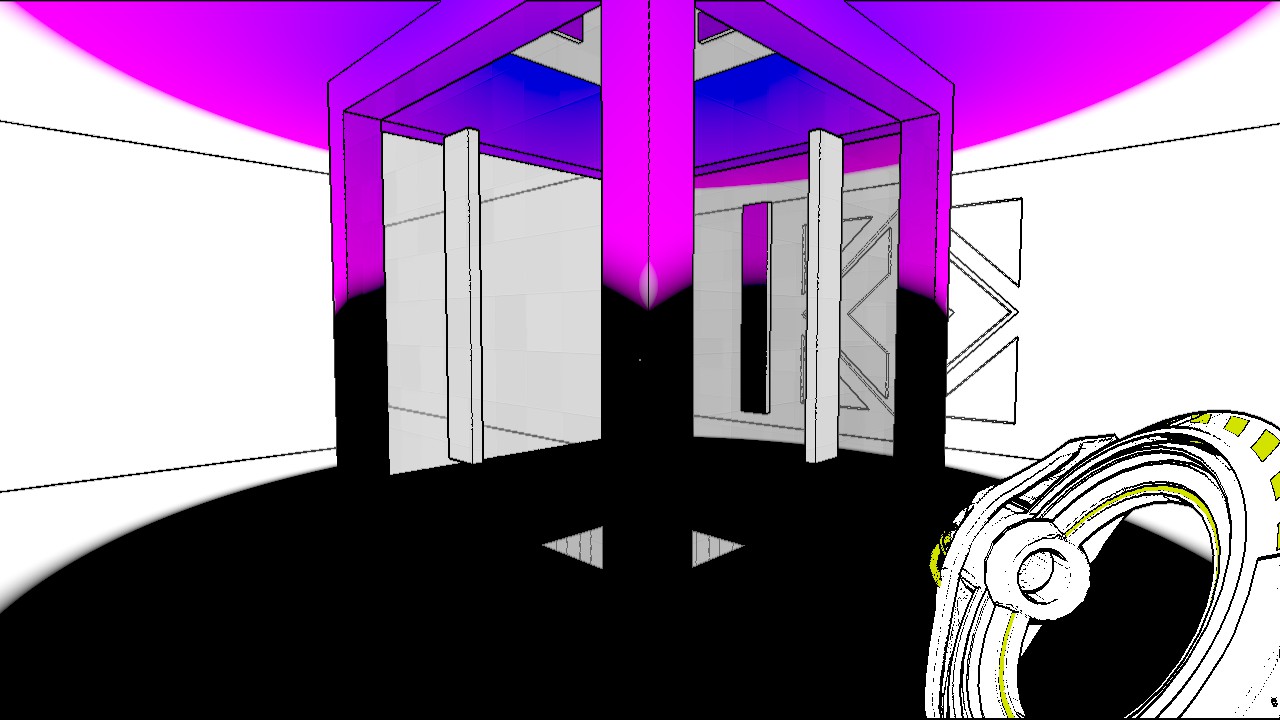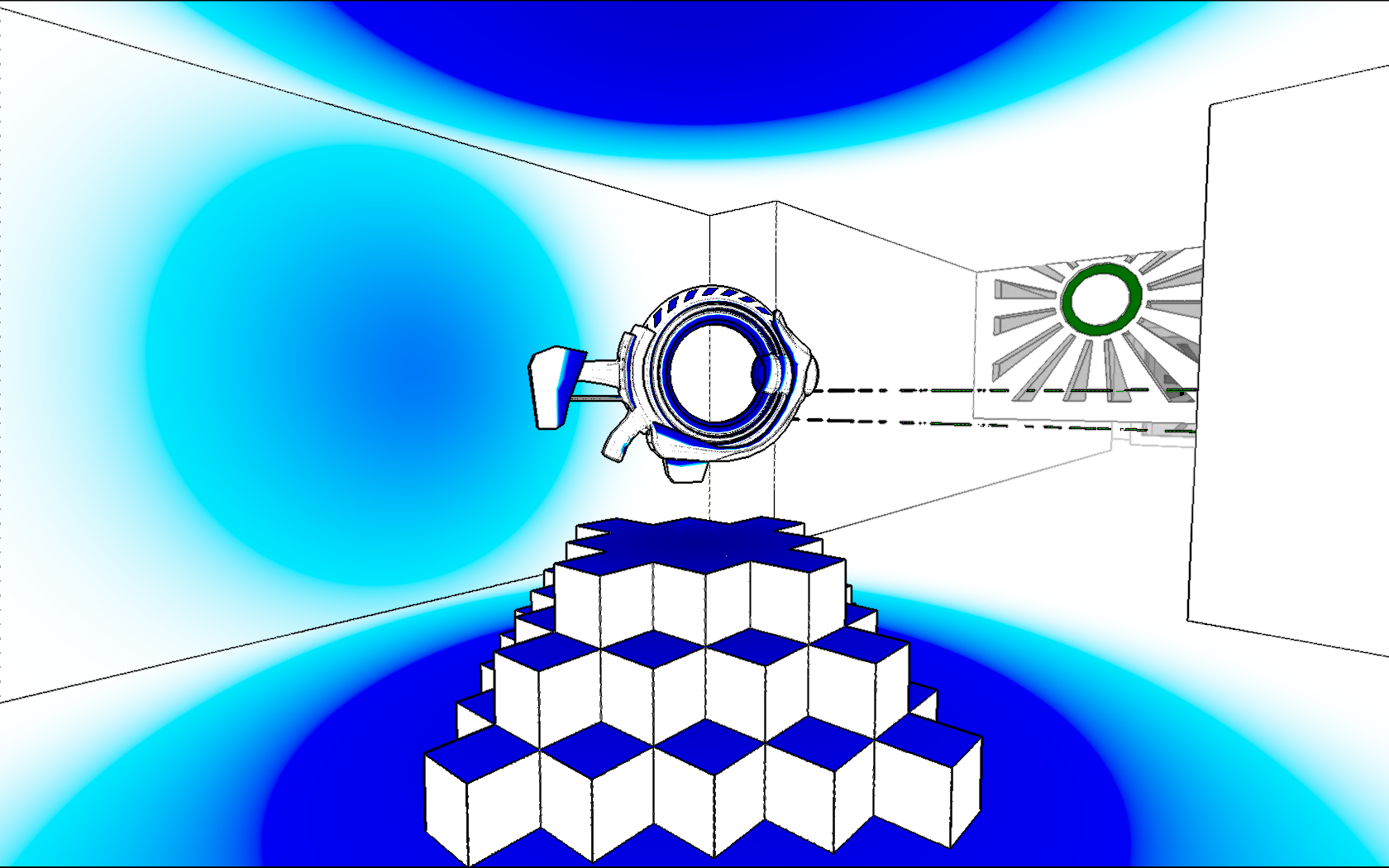Antichamber – Game Review
Antichamber is a game that plays you as much as you play it. At first glance the game looks like a simple first person puzzle game, much in the same vein of Portal and Portal 2. The perspective is the same, the object of the game is similar, and you even use a rather unconventional tool in the shape of a gun to progress. However, you soon find out that’s where the similarities end. Where Portal and Portal 2 both have clear antagonists and goals, Antichamber is very much player driven. Instead of proceeding from one puzzle to the next in a linear fashion as you do in Portal, the player is free to go to wherever he pleases, solving puzzles and unlocking areas in a fashion that makes sense to the player rather than the game developer. In this respect, Antichamber is almost more like Skyrim than it is like Portal. Instead of leading you by the hand and teaching you new principles as they come, the game simply plops the puzzles down in front of the player and says, “have fun” regardless of if the player actually has the tools to solve them yet.
Additionally, Antichamber takes great pleasure messing with the player. There are a plethora of puzzles that are there only to frustrate the player, and since there are no clear lose conditions, players can throw themselves repeatedly at a puzzle, only to find that it has no real solution. It was a red herring all along. Either that, or they didn’t actually have the tools to solve the puzzle at the time. Combine that with Escher like geometries and perspective puzzles, this game is probably one of the most infuriating you’ll ever play.
Visual Design
The visual design of antichamber is almost like a piece of art that you’d find at a museum: abstract, full of saturated colors, and sharp contrast. Indeed, the game is one of the most beautiful that I’ve seen in a long time, even in the current era of ultra realism and fidelity so high you can count an NPC’s pores. The simplicity and abstractness blends perfectly with the actual gameplay. It’s probably the closest you’ll ever get to playing in an actual work of art. In fact, it could be one of the greatest arguments that games are, in fact, art, except for some glaring and absurd inconsistnecies.
Yeah…
It seems that the game designers have no sense of subtlety, do they? Despite their ability to create one of the most beautiful and challenging games in existence, the developers will give in to strange and juvenile humor from time to time. This wouldn’t be so bad in a game like, say, Borderlands, or even Halo, both of which managed to include some funny moments that didn’t mesh completely with the tone of the game and still pulled them off spectacularly well. In a game like Antichamber, which is so minimalist that each and every ounce of color and contrast has been carefully cultured, an inclusion like this simply breaks the tone of the game, knocking the player completely out of the experience.
Still, even for these crass and unwarranted invasions into the game’s otherwise clean and delightful visual design can’t completely ruin the game. Rather, it’s like a urinal in the middle of an art museum.
Gameplay
The gameplay, like everything else in the game, is deceptively simple. To begin with, you start out with nothing but your wits, and forced to navigate a world that seems designed to taunt you. The levels change when you look away, walls aren’t as solid as they seem, and you can easily get stuck in an infinite loop walking down the same corridor again and again.
Eventually you start to acquire tools, which bear some resemblance to the Aperture Science Handheld Portal Device. Before long, however, you’ll be wishing that you had something so convenient and easy to use. Instead of placing portals, these tools, which come in various colors, can only suck up, place, and move little cubes. That’s it. Not only that, but the game will go out of its way to deprive you of these blocks on a regular basis, forcing you to go through entire sections with only the resources that you find in that particular area. Combine this with deliberately misleading clues, recursive loops, elements that change depending on if you’re looking at them or not, recursive loops, outright taunts from the game developers, otherworldly entities, and recursive loops, and the game can easily be one of the most frustrating games you’ve ever encountered.
Progression
Progression in Antichamber can be somewhat rocky and obtuse. In a world that changes depending on what tools you wield and how you perceive things, determining where you are in the game can be somewhat tenuous at times. There will be times that you think you’re just on the edge of solving a puzzle, only to find out that it’s just the edge of something much larger that you don’t even have the tools for. Even so, there is a sort of pathway that players must follow to finish the game, and different sections will teach the player how to use their tools to their fullest potential. The main trouble is finding the tools you need, which can be like hunting for a needle in a haystack.
Luckily, there are only 4 of these tools that you need to find, called “Matter Guns.” Like I said before these “guns” allow you to pick up, place, and move blocks. Only read this section if you’re ok with spoilers. Needless to say, all higher guns retain the abilities of the lower ones.
Blue Gun
This is the simplest of the Matter Guns, and, like any starting gun, it’s really rather limited. It only allows you to pick up and put down cubes. While this is essential in getting to the other, more powerful matter guns, the puzzles that you can solve with this one are limited to the smallest and simplest in the game. Still, it’s way better than nothing, and you don’t even really start playing the game until you’ve acquired this one.
Green Gun
This matter gun isn’t terribly different than the Blue gun. In fact, the main difference between the Blue and the Green guns is that the Green gun can pick up and put down cubes as long as you hold down the trigger. This is actually a lot bigger deal than you think, as using the Blue gun can get very tedious very quickly. Additionally, the Green gun has a limited ability to generate more blocks, assuming he has at least 8 to start with. This is extremely useful in a pinch, and this gun will let you fly through the puzzles that were simply impossible to solve with the Blue gun.
Yellow Gun
The Yellow gun is unique in that it allows you to move blocks without having to actually pick them up. This is actually more useful than it sounds, as it lets you move blocks through places that would otherwise be inaccessible. This is especially important in later portions of the game.
Red Gun
The Red Matter Gun is the most powerful of the bunch, as it allows the player to replicate cubes in an unprecidented manner. As long as you have at least 2 cubes, you can make as many as you want. Careful, though, because you can crash your computer if you make too many.
Puzzles
The puzzles in Antichamber are, to say the least, devilish. They are deliberately designed to be confusing at first glance. There are doors that close whenever you look at them, walls that disappear when you look at them for too long, dead ends, paths that lead to different places depending on where you’re coming from, 4th dimensional spaces, walls you can walk through, and hallways that never end.
That’s not even getting to the puzzles.
The puzzles themselves are as obtuse as possible, oftentimes with some subtle twist that you have to catch to be able to get to your goal. They start out simple enough. Put this block here and you’ll open a door. Place another block to prop the door open, and retrieve the first bock. However, keep doing this and you’ll get to the end of the puzzle with a shortage of blocks. Seems a little unfair, doesn’t it?
The thing you have to remember about the puzzles, and the game itself, is that it doesn’t play by the normal rules of logic. However, that doesn’t mean that it doesn’t play by any rules at all. Quite the contrary. Both the game and the puzzles have very specific rules that they always follow. To succeed you simply have to learn them. At first there will be a lot of trial and error, but as time goes on you’ll get more and more used to thinking laterally, making the puzzles seem more and more intuitive.
That doesn’t mean you won’t get stumped, though, because you will. A lot. Especially during the beginning and end of the game. The beginning because you’re still learning how to think and acquiring the tools you need to effectively move through the world, and the end because the puzzles at the end are, quite simply, mind bogglingly difficult.
This is, probably, the weakest point of Antichamber. The difficulty curve. While this can be true of almost any puzzle game, there will be puzzles scattered throughout the game that are key to your progression which will stop you cold in your tracks with no clue as to how to proceed. Sometimes, especially early on, you can get around this by simply working on a different puzzle. However, there will be points in the game where this simply isn’t possible: you must solve this puzzle to progress. These sections can be incredibly frustrating, to say the least.
Replayablility
Unfortunately, Antichamber has rather limited replayability. Unless you’ve got the memory retention of Dory, once you’ve solved a puzzle there’s not much point in doing it again unless you’re trying for a speed run. The game designers have tried to mitigate this by including some secrets and rooms that can only be entered by the most determined and skilled of individuals. These puzzles, though, are really only there for the sake of the puzzles themselves. The only things that are secreted away in these inaccessable chambers are alpha screenshots and concept art. While interesting, they’re hardly worth the frustration it takes to get to them. Beyond that, there are 13 pink cubes that the player can find and manipulate, but they don’t seem to actually do anything. Sadly, this means that Antichamber is pretty much a one time experience.
Final Verdict
Antichamber is definitely one of the most enjoyable games that you will ever play. If that’s not true, then it will certainly be one of the most frustrating. While it certainly has its problems, with it’s crass jokes and widely variable difficulty curve. Even so, the sheer beauty of the game, the intense puzzles, and the elegant gameplay are more than enough to cover up its flaws. Definitely go out and buy this one.




